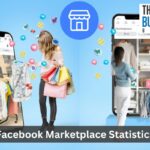Who doesn’t want a customized and personalized experience online, right?
And with the increasing demand for more individualized digital space, it comes with no wonder that social commerce has dominated the world of online shopping.
Don’t believe us? Okay, then answer this, how often do you check or purchase a product using Social Commerce sites?
The answer is obviously extremely often. And we’ve got some amazing Social Commerce statistics to justify this statement.
But before that, let’s talk about Social Commerce. It’s a part of e-commerce that includes online and social media that covers social interaction and user contributions, supporting buying and selling services and products online.
In short, Social Commerce is the utilization of social networks in terms of electronic commerce transactions.
Social media channels like Instagram, WhatsApp, Facebook, Twitter, and Pinterest have hundreds and thousands of businesses and brands marketing on their channels.
Most of them already have approved shopping and payment functions, allowing users to purchase a service or product directly from the platforms.
With over 70% of the young generation liking digital interactions with brands over traditional methods, the significance of including Social Commerce into a business’s marketing strategy is undeniable.
Despite being relatively new, Social Commerce falls inside the boundaries of e-commerce sales, which should reach $4.2 trillion this year.
For that reason, the potential revenue is high, attracting the attention of more and more marketers across a range of industries.
Over the past couple of years, the customer online shopping journey has advanced to include a greater reliance on Social Commerce.
Recent accelerators like advanced conversion tools, and a COVID pandemic-related inability to purchase something in-person, have led to increased sales capture rates and improved customer comfort levels with integrated social e-commerce and social shopping.
Whether you’re searching for facts to promote your social media business or want to build your online strategy, we’re here to help you.
Read on the following statistics in 2024 to understand the existing market and discover best practices to attract customers and grow your business.
Let’s get started.
Post Contents
- 1 Key Social Commerce Statistics 2024
- 2 Social Commerce Usage Statistics in 2024
- 3 Global Social Commerce Statistics 2024
- 4 Social Commerce Revenue and Sales in 2024
- 5 Facebook Social Commerce Statistics in 2024
- 6 Instagram Social Commerce Statistics in 2024
- 7 Other Important Social Commerce Stats in 2024
- 7.1 12. More than 10% of E-Commerce Companies Around the World Plan to Sell Directly via Social Media Channels
- 7.2 13. Nearly Half of The Brands Planned to Invest More in Social Commerce in The Year 2022
- 7.3 14. Over 50% of The Younger Generation (Gen Z and Millennials) in The United States Purchase Clothes They See on Social Media
- 7.4 15. Approximately 70% of Young People Trust YouTube Influencers More than Traditional Celebrities.
- 7.5 16. Around 14% of Social Media Users Discover New Brands from Online Celebrities or Influencers
- 8 Conclusion
- 9 Sources
Key Social Commerce Statistics 2024
- There are around 90.2 million Social Commerce buyers in the United States
- Around 69% of American users shop via Social Commerce
- Over half of the Generation Z based in the United States has made a purchase via the Social Commerce network
- The Social Commerce market is predicted to grow at a Compound Annual Growth Rate (CAGR) of 31% by 2022
- With an increase in 30% sales immediately after the launch of buying pins for sale, Pinterest became one of the world’s most popular social commerce website
- The total global Social Commerce sales amount to $492 billion in 2021
- The United States Social Commerce sales rose by 35.8% to 36.62 billion USD in 2021
- Facebook currently has more than one million online shops with over 250 active shop visitors
- Around 78% of the United States-based social network users discover new products via Facebook
- Instagram helps 83% of its users to decide whether to purchase a product or service
Social Commerce Usage Statistics in 2024
1. There Are Around 90.2 Million Social Commerce Buyers in The United States
Internet social networking has reshaped people’s daily lives in multiple aspects, including the way we spend and earn money.
And when e-commerce meets social media, Social Commerce is born.
Although China is far ahead of most countries around the world in terms of social media shopping adoption, the outbreak of the COVID-19 pandemic pushed this trend further in various other countries, specifically in the United States.
As of the recent statistics, a total of nearly 80 million Social Commerce buyers were there in the United States in 2020, that’s a 30% rise in numbers from the 60.6 million in 2019.
Considering Social Commerce’s massive reach, increasing popularity, and potential for monetization, marketers have intensified their efforts two-fold to embed social media in their marketing strategy.
Moreover, US-based social buyers reached 90.2 million in 2021 and are expected to cross the 95 million mark this year.
New-age consumers look for differentiated products with remarkable customer service and depend on social media posts to make a purchase decision.
As a result, it has been verified that a social media channel influences buying decisions of nearly all American social network users.
2. Around 69% of American Users Shop via Social Commerce

Digital shopping is expanding so fast that the market size of online shopping around the world will almost hit 4 trillion during the pandemic in 2020.
In fact, as per the new statistics, it’s expected that there will be around 300 million online shoppers in the United States in 2023.
And that’s 91% of the country’s total population (sounds crazy, right?).
Almost 69% of the total population in the United States shops via online mode, around 25% of them purchase things online at least once a month.
More than half of these online shoppers (59%) bought clothing items, and around 47% purchased their first item from Amazon.
However, Americans aren’t the only individuals who shop online. People around the world understand its benefits and are shifting to shopping online.
The penetration rate of online buyers across the world as of 2018 was 47.3%.
Moreover, if we look at statistics by gender, it’s seen that the diversity between the fraction of male and female online shoppers is not much different; while 68% of the men shop online, 72% of the American women prefer online shopping.
The main difference between women and men online buyers comes from what they shop for.
While women usually go for clothing and groceries, men generally shop for heavy-duty items like computers and furniture.
3. Over Half of The Generation Z Based in The United States Has Made a Purchase via The Social Commerce Network
It can’t be denied that there’s a strong connection between Social Commerce, networking, strategies, and Generation Z social media usage.
Gen Z-ers are the people born between 1997 and 2012. They’re tech-savvy, and their usage of electronic devices continues to grow.
The recent data about the Gen Z population revealed that nearly all (98%) of them have a smartphone, and they, on average, spend 4 hours a day on apps (excluding the gaming time) as of the last quarter of 2021.
The majority (97%) of Generation Z consumers reveal that they currently use social media as their main source of buying inspiration.
While 61% of them are particularly interested in watching video content, 65% use the same to find entertaining content.
In fact, 55% of the Gen Z population-based in the United States have bought at least one item via a Social Commerce network.
As a matter of fact, various brands and companies targeting the younger generation know how social media advertisements influence the fashion decisions of their consumers.
And that’s why their marketing team mainly focuses on building a strong social media presence using the help of Social Commerce networking.
That’s not all; the statistics also show that with Gen Z-ers increasing their purchasing power, the number of online buyers will go up from 79 million to 108 million in the next three years.
Global Social Commerce Statistics 2024
4. The Social Commerce Market Is Predicted to Grow at A Compound Annual Growth Rate (CAGR) of 31% by 2022
Social Commerce, in simple terms, is the phenomenon where various e-commerce companies use social media channels, including Instagram, Facebook, and Pinterest, with the aim of marketing and selling their services and products online.
The utilization of social media for marketing purposes is rapidly growing.
That’s led by the tremendous potential social media channels have in digitally marketing, promoting, and selling products or services online.
That’s not all; social media platforms also allow companies or brands to have access to a larger audience base that they otherwise wouldn’t have been able to have with any other means of marketing.
During the COVID pandemic, the global Social Commerce market was estimated at 559.7 billion USD for the year 2020 and is expected to reach a massive mark of 2.9 trillion USD by 2026.
That means the market will have a CAGR of 30.8% over the period of 2020 to 2026. Moreover, speaking of the Business to Consumer (B2C) model, it’s estimated to grow at a 31.9% Compound Annual Growth Rate, reaching 2.2 trillion USD by the end of the year 2026.
As per some trusted reports, it’s seen that the business implications in the COVID-19 economic crisis, the growth in the Business to Business (B2B) model have a 29.6% CAGR for forthcoming years.
This segment, as of 2020, accounts for a 32.6% share of the total Social Commerce market across the globe.
Thanks to the popularity of social media among users and its usage by various brands to get to their targeted audience, the Social Commerce market is expected to expand at a CAGR by the current year.
The user base is growing mostly via Facebook and Instagram as a result of the circulation of the content between these two platforms.
5. With An Increase in 30% Sales Immediately After the Launch of Buying Pins for Sale, Pinterest Became One of The World’s Most Popular Social Commerce Website
Similar to Instagram, Pinterest is a visual discovery engine that focuses primarily on creative things. Its graphic discovery engine is the best option for Social Commerce.
It offers a visual search network and lens that works amazingly with shoppable Product Pins.
One of the prominent features that Pinterest offers that interests its users is the “find items about users’ photos.”
The social media platform also provides suggestions to users of purchasable items, offering a direct link to a merchant’s checkout.
Research about Pinterest Social Commerce reveals that 80% of Pinners (users of Pinterest) start with a visual search whenever they shop online, in contrast with 58% of non-Pinners.
The Pinterest platform also features Shop the Look ads that permit sellers or retailers to promote multiple products in a single advertisement.
Its users can find amazing products similar to Pin’s image and check out the same on the retailer’s website.
Traders can tag a maximum of 25 products in a single photo.
While Pinterest is the top Social Commerce company globally, some other important Social Commerce websites include Lyst, Soldsie, Kickstarter, and Shopee.
For instance, Social Commerce websites like Shopee help various brands to establish a loyal customer base and grow organically.
Although Shopee allows audiences to promote and review products, it attracts customers and companies.
Moreover, Lyst uses user-curated content and user recommendations, offering a way by which customers can use Social Commerce to benefit from.
These approaches will ultimately lower the percentage of customers who generally change their minds while making a purchase decision after checking social media channels, which currently rests at 71%.
Social Commerce Revenue and Sales in 2024
6. The Total Global Social Commerce Sales Amount to $492 Billion in 2021
The internet is currently experiencing a worldwide social revolution.
Almost every 4.8 billion internet users worldwide are on social media; more precisely, 4.5 billion individuals have at least one social media account.
That means around 57% of the total population across the globe is using social media. And that’s why social media is rightly called the front door to the internet.
According to some trusted reports, 96% of global internet users will use social media channels in July 2021.
Followed by messaging and chat platforms at 95% and search engines at 84%.
Social Commerce is a situation where the entire purchasing journey (from product discovery to the end checkout process) is carried out using a social media channel.
Although businesses know the importance of including social media as a part of their marketing strategy, they’re not well aware of the effect of this online social revolution.
As per the latest statistics, in 2020, around $537 billion were spent on digital advertising worldwide. However, less than one-third of this money was spent on social media ads.
Speaking of numbers, the total Social Commerce sales as of 2021 amounts to 492 billion USD and is expected to increase three-fold by 2025, reaching around 1.2 trillion USD, as reported by some trusted sources.
With that being said, Social Commerce currently represents 10% of total e-commerce sales; however, its share is likely to reach 17% over the next three years.
And yet retail businesses in a developed economy, such as the United States, United Kingdom, and Europe, are behind developing economies when it comes to exploiting the opportunities in Social Commerce.
7. The United States Social Commerce Sales Rose by 35.8% to 36.62 Billion USD in 2021
Social Commerce sales in the United States are massively increasing; however, the size of the Social Commerce market compared to that of China fades away, according to Social Media eCommerce statistics.
The United States Social Commerce sales increased by 35.8% to 36.62 billion USD in 2021.
That’s a slight slowdown in the growth rate from Social Commerce’s rate in 2020 when sales rose by 38.9%.
That’s simply because of the COVID pandemic-driven expansion in e-commerce and growing social media consumption.
However, in spite of these potential growth rates, the American Social Commerce market is around one-tenth the size of Social Commerce market growth in China at 351.65 billion USD in 2021.
The United States even lags behind China when we look at Social Commerce concerning the total number of e-commerce sales.
In 2021, Social Commerce marked up only 4% of America’s retail e-commerce market, while it made up 13.7% in China.
The reason behind China’s powerful lead in social commerce is undoubtedly the vast number of social shoppers in the country.
As of 2021, there were 424.4 million Chinese people of the age 14 or up making at least one online purchase during that year, while only 90.2 million people in the US did the same.
Experts believe that the gap between these two countries will be comparatively stable through 2024; at that time, Social Commerce will account for 5% of America’s retail e-commerce sales, accounting for 14.5% in China.
Facebook Social Commerce Statistics in 2024
8. Facebook Currently Has More than One Million Online Shops with Over 250 Active Shop Visitors
Facebook Shop is a tool that permits businesses and sellers to catalog their products on the platform and sell the same from within the platform itself.
With Facebook Shop, a business can set up a single online shop for customers at ease which can be accessed on Instagram and Facebook.
Creating a Facebook Shop is simple as well as free of cost.
Sellers or brands can select the items they want to highlight from their list and personalize and customize their shop’s feel and look with accent colors and a cover image, flaunting their online shop.
In simple words, any seller, literally any seller (no matter how big or small their business and budget is), can bring their brands online and connect with a wider range of customers at any time and place as per their convenience.
As per the recent stats, over 1 billion users visit the Facebook marketplace each month in the first quarter of 2021.
The CEO of Facebook, Mark Zuckerberg, recently shared that Facebook currently has over 1 million monthly active Shops with more than 250 million monthly active Shops visitors.
Facebook marketplace, launched back in 2016, allows users to trade (buy and sell) various products with their community.
On the flip side, Facebook Shop is a relatively new concept, launched in 2020.
This section offers businesses a new way to remarkably display their products on their page from where consumers can buy them within the platform.
9. Around 78% of The United States-Based Social Network Users Discover New Products via Facebook
If you’re a business and aren’t investing in social media channels, especially Facebook, for your business, you’re missing out on the golden opportunity to expand your business model.
New Facebook Commerce statistics show that 8 out of 10 social network users in the US discover new products using Facebook.
Additionally, one in every four individuals uses this platform to buy products. Moreover, the year 2020 was without any doubt a year of rapid change.
The COVID pandemic changed the way of our living and the way we interact with our family, friends, and various brands.
In fact, consumers became more inclined towards online and digital channels for various day-to-day activities.
More precisely, people started using social media platforms for shopping purposes, and Facebook is no exception.
Connecting users to businesses and products, around 78% of social network users in the United States discover retail products to purchase through Facebook.
As per various surveys in 2021, over half of the American population have used this channel to actively search for products. Most of them discover new goods via Facebook Pages, Newsfeeds, and Groups.
Besides being one of the top social media channels, Facebook is also turning into an important product discovery platform.
People spend time on this channel to communicate with others or post about their achievements and research, browse, and find inspiration and products.
Marketers can use this platform to expand their business by improving the customer journey.
A marketer can use Facebook to easily discover their products on smartphones and ultimately drive more sales and more profits.
Instagram Social Commerce Statistics in 2024
10. Instagram Helps 83% of Its Users to Decide Whether to Purchase a Product or Service
We all know how impactful Instagram is for brands; however, let’s take things a step further. As per some latest reports, Instagram helps over 83% of users to decide whether to purchase a product or service.
The users of Instagram reveal that they make a purchasing decision depending on something that they saw while scrolling through the app.
Moreover, Instagram Influencer marketing has an influential role in influencing a consumer’s purchasing decision.
Therefore, if you’ve got a business, you should definitely include Instagram in your social media marketing, or else you’ll miss out on a huge opportunity to expand your business, specifically if your targeted audiences are millennials or Gen Z.
As per the survey, communication with brands also plays a great role in an individual’s shopping journey.
When Instagram users were asked how the platform helps them with their product decision, 42% said that it helps them discover products or services, and 44% of them said it helps them find new information about different products or services.
In addition to this, 41% of the surveyed individuals reveal that a brand’s content assists them in researching various products or services.
A slew of different strategies that a marketer can use to influence a person’s buying decision on Instagram.
Therefore, whether it’s engaging users with attractive and creative stories, Instagram ads, or using relevant Instagram hashtags to become more discoverable, it all makes sense if a marketer does it correctly.
11. Around 90% of The Total Instagram Users Follow at Least One Instagram Business Account
As Instagram is becoming a popular place for a business entity, an estimated 71% of the United States-based businesses use Instagram for expanding and promoting their businesses.
That means roughly 7 out of 10 businesses in the US use Instagram as a tool to boost their online presence and connect with their customers. The data is as of 2021, and today the numbers are even higher.
Additionally, there are over 250 million business accounts on the platform worldwide that users visit almost every day.
No wonder 90% of users follow at least one Instagram business account.
With online visibility on Instagram, Brands can satisfy their customers’ needs much more quickly and easily.
That’s because 2 out of 3 Instagram users say that they believe Instagram allows interaction with brands.
Moreover, it’s pretty easy for users to purchase products directly from the Instagram app.
Around 130 million Instagram consumers click on shopping posts every month to learn more about products or services.
Another important statistic about Instagram is that 36.2% of Business to Business (B2B) decision-makers use this platform to research new products or services.
These numbers clearly indicate how powerful Instagram is as a crucial business tool in the current digital world.
While in 2018, half of the Instagram users followed at least one business account, today, the percentage increased to 90%.
That’s quite a big number. With 90% of users following business accounts on the platform, businesses have a huge opportunity to expand their reach using Instagram.
No matter if you’ve got a local business or a multinational company, you can improve your brand’s goodwill by using Instagram.
Businesses can add their contact details, including business phone numbers and addresses, with an Instagram Business profile.
Having a Business profile helps a brand to have access to analytics which can offer information about reach and impressions per post.
That’s not all; it also provides information about demographics helping to understand their clients more.
Other Important Social Commerce Stats in 2024

12. More than 10% of E-Commerce Companies Around the World Plan to Sell Directly via Social Media Channels
One of the growing trends in Social Commerce is gradually more e-commerce businesses are selling their services or products on various social media channels.
As per a survey conducted in 2020, more than 10% (more precisely, 12%) of online sellers planned to enter the world of Social Commerce in the year 2021, whereas 30% of them were already involved in it.
On the contrary, 20% of the surveyed e-commerce businesses showed no interest in utilizing Social Commerce for their businesses.
However, experts believe that these companies will revise their plans in the upcoming years due to social media’s increasing popularity in the e-commerce space.
13. Nearly Half of The Brands Planned to Invest More in Social Commerce in The Year 2022
As per the reports of 2021, approximately 49% of the total e-commerce brands across the world planned to invest more in Social Commerce websites in 2022.
Moreover, the Social Commerce tactics of around 81% of businesses include keeping or multiplying their Livestream selling budgets.
As a result of the fact that nearly half (46%) of the consumers like to watch products review videos before making any purchase motivated the e-commerce companies to increase the budget of Social Commerce investments.
14. Over 50% of The Younger Generation (Gen Z and Millennials) in The United States Purchase Clothes They See on Social Media
A survey conducted in 2019 showed that 55.2% of Gen Z (aged between 14 and 24) and 50.6% of millennials (aged between 25 and 34) in the United States had bought clothing items they first saw on social media.
That means Social Commerce brands dealing in fashion can take advantage of these findings to customize their online ad campaigns and use social media platforms to the fullest.
The fashion industry has lots of potential for e-commerce businesses, talking about the United Kingdom.
All thanks to its powerful online shopping penetration and the UK-based fashion industry’s dynamic presence on social media.
For instance, the most popular fashion seller brand on Youtube across the country had a phenomenal 22.1 million views in 2021.
15. Approximately 70% of Young People Trust YouTube Influencers More than Traditional Celebrities.
As per the survey conducted by Google, around 70% of teenagers said that they connect with YouTube influencers more than traditional celebrities.
In fact, YouTubers have immense influential power over millennials as well.
As such, 60% of millennials believe that YouTube influencers understand them more than their family members and friends.
Approximately 60% of all YouTube users reveal that they’d purchase a product solely because of the recommendation of their favorite YouTuber.
That’s an important statistic for retailers, especially because this channel is developing YouTube Shopping (a social selling platform).
16. Around 14% of Social Media Users Discover New Brands from Online Celebrities or Influencers
Businesses use different tactics to expand their businesses, and online marketing strategies are no exception.
Many businesses collaborate with social media influencers and celebrities to achieve more reach.
That’s because 20% of individuals use social media only for their favorite celebrities rather than uploading their own content.
In addition, 14% of these users discover new brands and products from their favorite celebrities’ endorsements.
And another 14% hear about new products from the reviews posted by celebrities.
New data on statistics reveals that 23% of users would purchase an influencer-promoted product if the post they uploaded had a bunch of likes and positive comments.
Likewise, around 13% of social media users would be interested in buying a product if it included a Buy button in that social media app.
Conclusion
Social Commerce is indeed a heavy name in the e-commerce industry in 2024.
The recent alteration in the ordinary everyday lives of an individual has helped the platform get listed among the trendy elements.
Social Commerce, modern-day e-commerce, and social media integration are splendid, and the statistics around the platform are also breathtaking.
If you’ve read all the way through, you know exactly what we’re talking about.






























